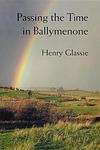The Greatest American "Nonfiction, Historical fiction" Books Since 1970
Click to learn how this list is calculated.
This list represents a comprehensive and trusted collection of the greatest books. Developed through a specialized algorithm, it brings together 290 'best of' book lists to form a definitive guide to the world's most acclaimed books. For those interested in how these books are chosen, additional details can be found on the rankings page.
Genres
Historical fiction is a genre of literature that combines fictional stories with real historical events, settings, and characters. These books often take place in a specific time period and are based on research and factual information, but also include imaginative elements to create a compelling narrative. Historical fiction allows readers to experience the past in a unique and engaging way, while also providing insight into the social, cultural, and political issues of the time.
Countries
Date Range
Reading Statistics
Click the button below to see how many of these books you've read!
Download
If you're interested in downloading this list as a CSV file for use in a spreadsheet application, you can easily do so by clicking the button below. Please note that to ensure a manageable file size and faster download, the CSV will include details for only the first 500 books.
Download-
1. What Is the What by Dave Eggers
The novel is a fictionalized account of a real-life Sudanese refugee, Valentino Achak Deng, who was forced to flee from his village during the Second Sudanese Civil War. The story follows his harrowing journey as a child through Ethiopia and Kenya, his life in various refugee camps, and his eventual resettlement in the United States. The book explores themes of survival, identity, and the power of storytelling, while shedding light on the tragic history and ongoing humanitarian crisis in Sudan.
-
2. Tisha by Robert Specht
"Tisha" is a biographical novel based on the true story of a young woman who moves to the Alaskan wilderness in the 1920s to become a teacher. The protagonist faces numerous challenges including harsh weather, isolation, and cultural differences, but remains steadfast in her commitment to educate the children in her care. The story also explores her fight against racial prejudice in the community, as well as her love affair with a half-Native man.
-
3. The Lost Painting by Jonathan Harr
"The Lost Painting" tells the story of a lost masterpiece by Italian Baroque artist Caravaggio, titled "The Taking of Christ." The book follows the journey of a young art historian, Francesca Cappelletti, as she sets out to uncover the painting's whereabouts. Along the way, she encounters a cast of characters including art dealers, art historians, and even a mafia boss. Through meticulous research and a bit of luck, Cappelletti finally locates the painting in a Dublin Jesuit house, where it had been hanging for centuries, unrecognized as a Caravaggio. The book is a captivating tale of art history, detective work, and the power of obsession.
-
4. Isaac's Storm by Erik Larson
"Isaac's Storm" is a gripping narrative that chronicles the devastating 1900 Galveston hurricane, the deadliest natural disaster in American history, through the eyes of Isaac Cline, a senior meteorologist for the U.S. Weather Bureau. The book delves into Cline's personal and professional life, exploring his initial underestimation of the storm's severity and the tragic consequences that followed. It combines meticulous research with vivid storytelling to capture the human drama and the meteorological turmoil of the event, highlighting the limitations of early 20th-century weather forecasting and the impact of human error and hubris on disaster response and preparedness.
-
5. Passing The Time In Ballymenone by Henry Glassie
"Passing the Time in Ballymenone" is an immersive ethnographic study that delves into the rich oral traditions and community life of a small, rural village in Northern Ireland. The book explores how the residents of Ballymenone, through storytelling, music, and historical narrative, preserve and shape their cultural identity amidst the backdrop of political conflict and social change. The author meticulously documents the everyday conversations and interactions among the villagers, offering a profound insight into the ways in which folklore and cultural practices are interwoven with individual lives and collective memory.
-
6. The Boys In The Boat by Daniel James Brown
This book tells the inspiring true story of the University of Washington's 1936 eight-oar crew and their epic quest for gold at the Berlin Olympics. It focuses on how these sons of loggers, shipyard workers, and farmers overcame immense physical and psychological challenges to defeat elite rivals first from eastern and British universities and finally the German crew rowing for Adolf Hitler in the Olympic Games. The narrative not only captures the sheer physicality and competitive nature of rowing but also delves deeply into the personal lives and backgrounds of the crew members, illustrating how their shared experiences and unbreakable bond drove them to achieve an unparalleled victory in the face of adversity.
Reading Statistics
Click the button below to see how many of these books you've read!
Download
If you're interested in downloading this list as a CSV file for use in a spreadsheet application, you can easily do so by clicking the button below. Please note that to ensure a manageable file size and faster download, the CSV will include details for only the first 500 books.
Download




